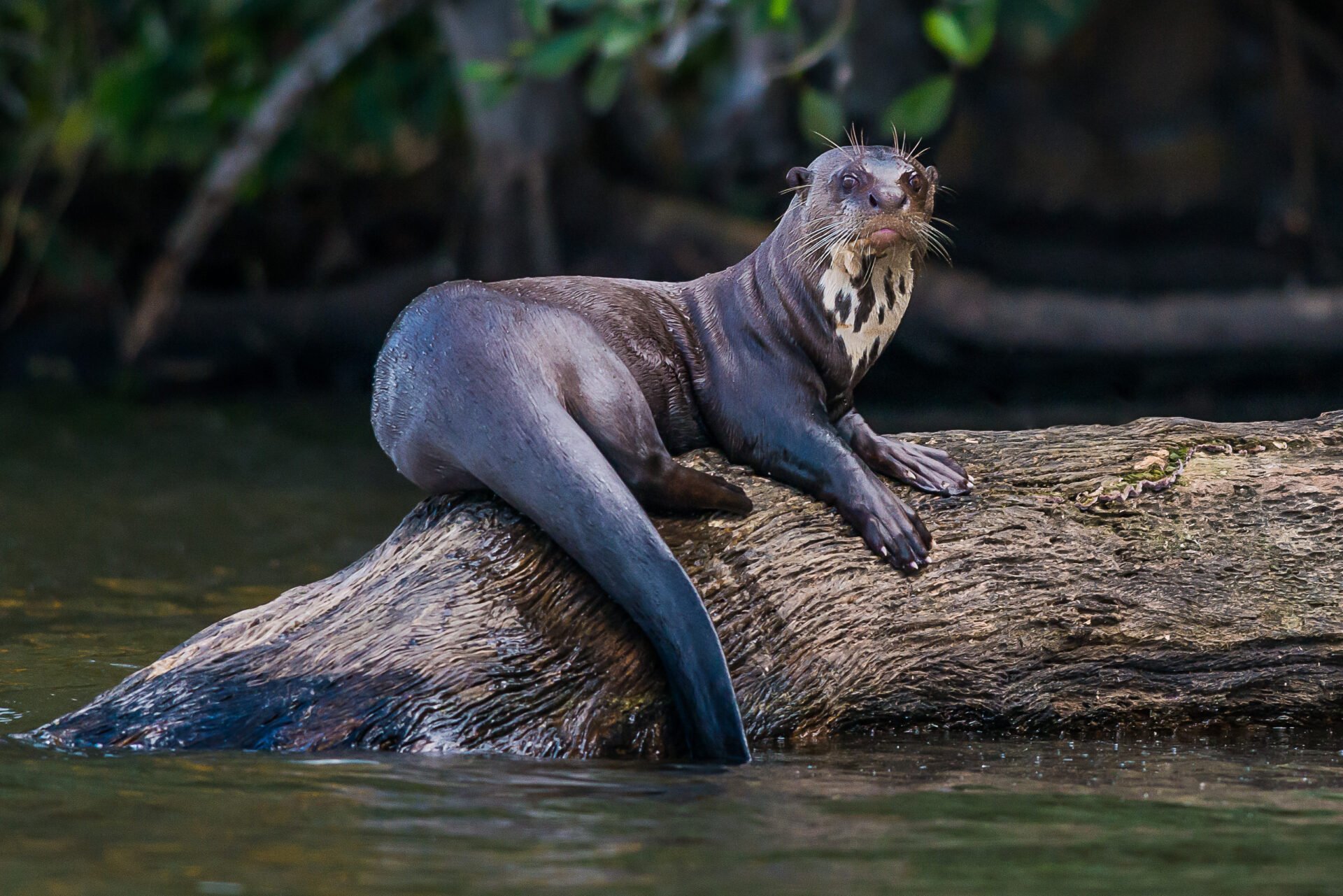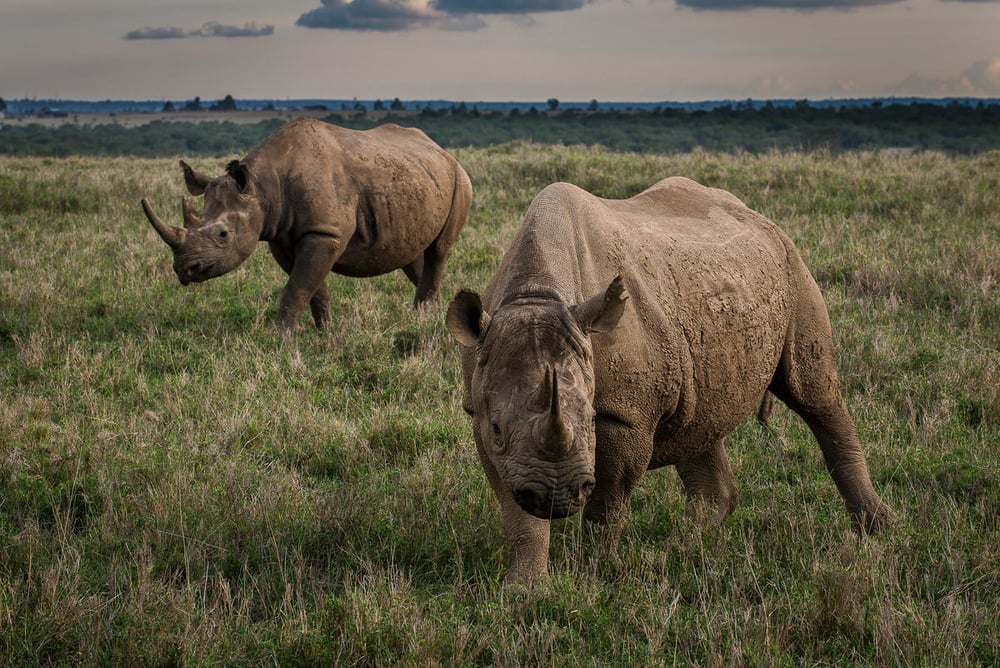From the forests of Central Africa to the depths of the Atlantic, countless species are fighting for survival as their habitats shrink, oceans warm and human pressures intensify. Yet around the world, scientists, indigenous communities and conservationists are proving that recovery of endangered wildlife is possible when people and planet work together.
Here we spotlight six species from Sunda tigers to angel sharks, whose stories reveal the fragility of nature and the extraordinary efforts underway to pull them back from the brink.
Angel Sharks – Heavenly Creatures in Troubled Waters
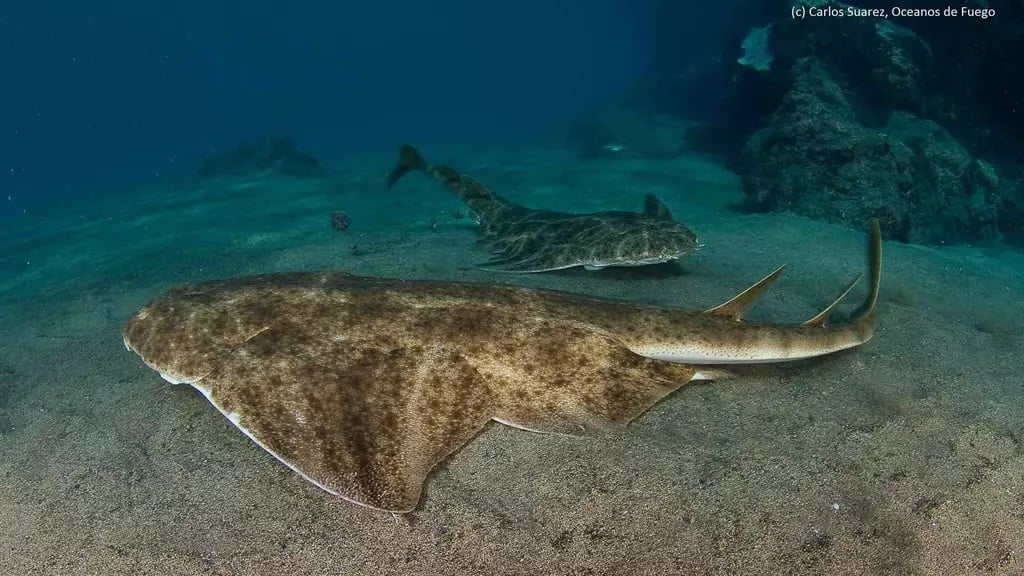
These pancake-like, crab-eating nocturnal shark species are often mistaken for stingrays or skate fishes.
Silently stalking the sandy sea beds and rocky reefs of Mediterranean seas, the eastern Atlantic, Black Sea and off the Welsh Coast, all 25 species are ambush predators, relying on their mottled skin for camouflage. Sadly, this hasn’t helped them evade bottom trawlers: the controversial fishing practice that drags large, heavy nets along the seabed, resulting in accidental bycatch.
The world’s second most threatened group of sharks and rays, angel sharks have suffered population declines of more than 80 per cent in the last 45 years according to WWF; a plight exacerbated by warming waters. A recent study published by Global Change Biology reveals that female angel sharks are skipping the mating seasons in their traditional breeding grounds around Lanzarote because of rising ocean temperatures.
How to Help: Boycott eating bottom-trawled groundfish like hake, halibut, haddock and cod and sole.
California Condors – Trying to Get Airborne
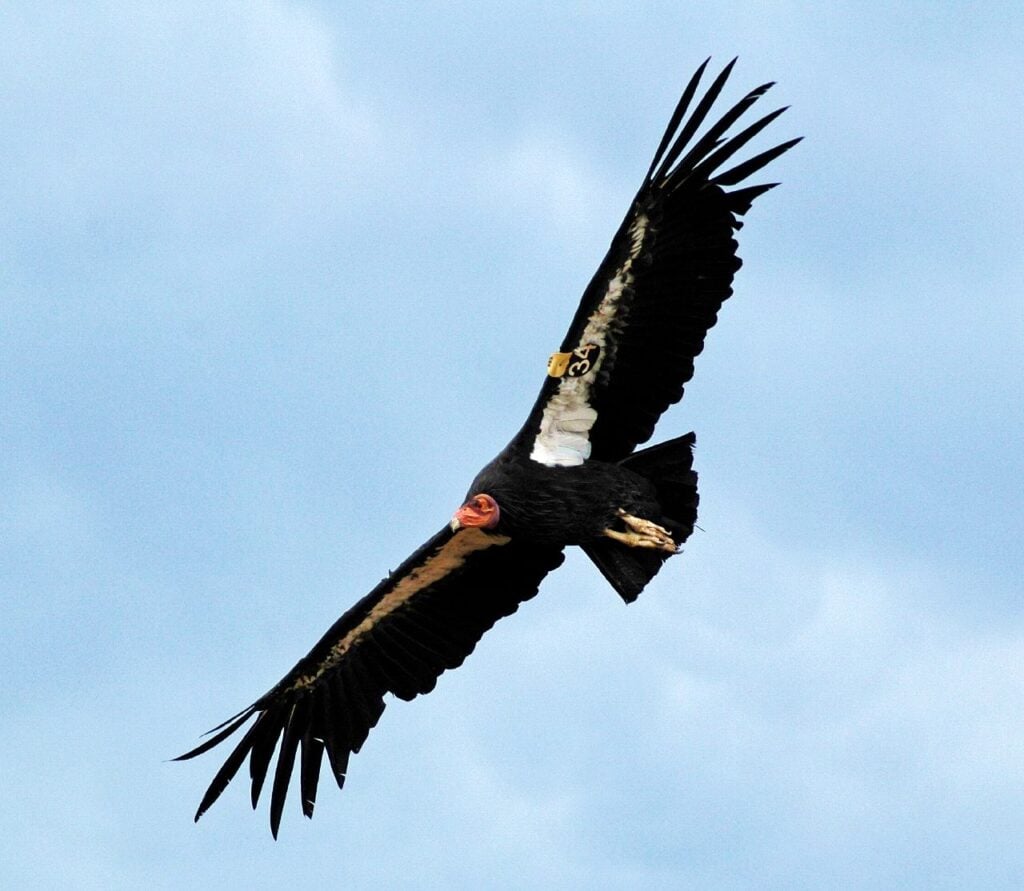
Officially North America’s largest species of bird, these magnificent vultures were at one time a familiar sight across the American Wilderness; their range spanning from Western Canada to Northern Mexico.
Unfortunately, their scavenging superpower – which helps mitigate disease outbreaks – has also been their downfall. Lead poisoning from hunting ammunition almost wiped them out, making the California Condor the very first species to be listed under America’s Endangered Species Act (ESA) in 1967.
An ongoing threat remains poisoning by contaminated animal carcasses laced with either lead or DDT (an odourless pesticide). But thanks to a four-decade-long captive breeding program, there are now 350 soaring above California’s Big Sur, Southern Utah and northern Arizona’s skies; an impressive recovery from the 22 California Condors that clung to existence in the eighties.
How to Help: Called “thunderbirds” by some native Americans, these culturally-important condors have been literally taken under the wing of the Yurok people: a Californian tribe who consider the species to be sacred. They’ve helped release 22 to date as part of the Northern California Condor Recovery Programme (NCCRP) in partnership with Redwood National and State Parks. You can support their ongoing reintroduction by donating to yuroktribe.org.
Sunda Tigers – Losing its Stripes
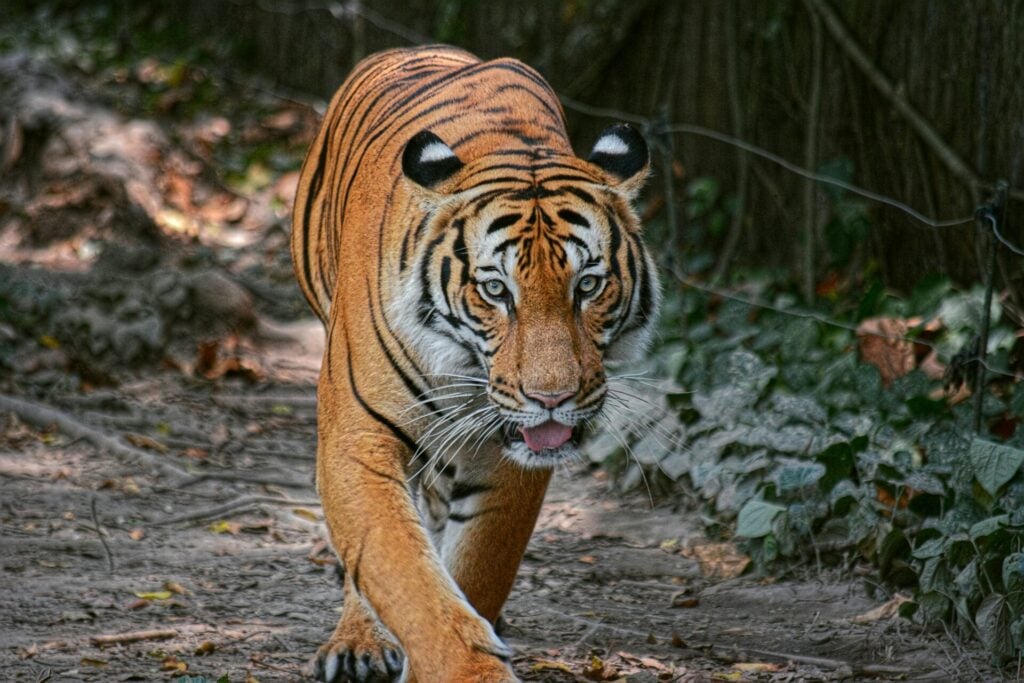
Whilst India’s tiger numbers are rebounding at a remarkable rate, the critically endangered Sunda tiger – endemic to the Indonesian island of Sumatra – is having its roar slowly silenced.
The smallest of the tiger species, these solitary big cats are distinguished by their mane-like ruff, darker fur and tightly spaced stripes. The same stripes that have made their fur so sought after, along with their teeth and bones (made into wine) for traditional Chinese medicine. Wildlife trade monitoring network TRAFFIC reports that eight out of ten Sunda tiger deaths are down to poachers. This, along with expanding unsustainable oil palm plantations and rampant deforestation – which is shrinking their sub-mountain forest home – has slashed Sunda tiger numbers to 400.
How to Help: Palm Oil is found in 50 per cent of supermarket packaged products, from shampoo to instant noodles. The Chester Zoo-created PalmOil Scan mobile app is a great way of identifying specific consumables to avoid. To help “on the ground,” you can donate $US50 to cover the rations for a forest ranger on a 10-day patrol in Sumatra’s Kerinci Seblat National Park (KSNP), during which they disable snares set for Sunda tigers. wildlifewarriors.org.au/conservation-projects/sumatran-tigers/
Giant River Otters – A Mammal like no Otter
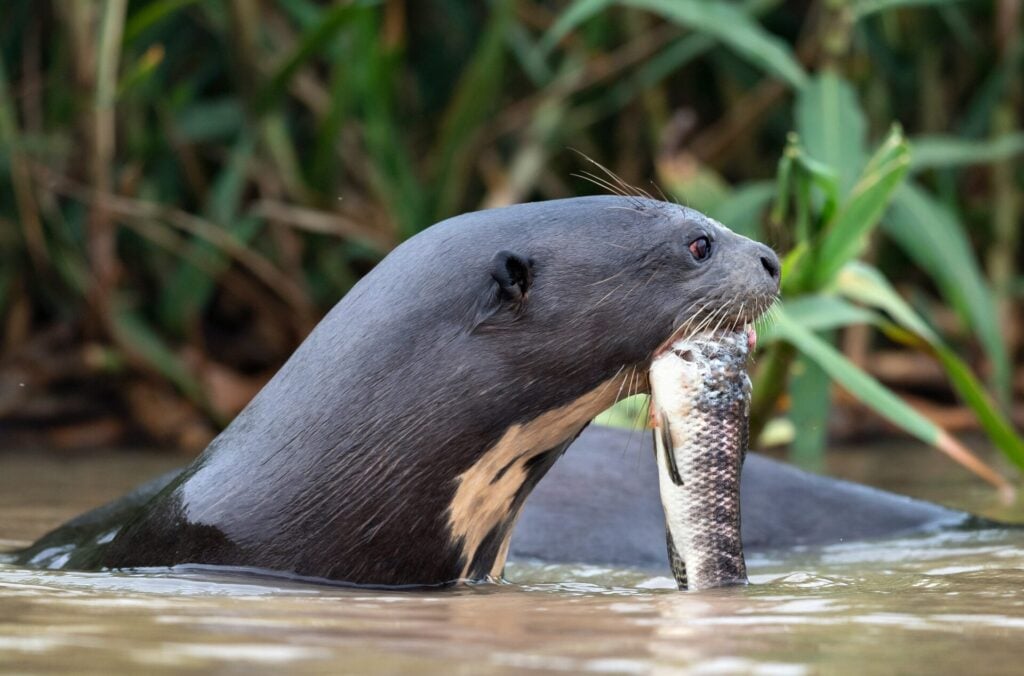
Found in small pockets of the Amazon and Brazil’s Pantanal, the endangered giant river otter is one of South America’s largest wetland aquatic predators. Being skilled hunters and swimmers has earned these charismatic and social mammals the nickname ‘River Wolves,’ that rely on eating roughly 20 per cent of their body weight in fish, daily.
Having bounced back from near-extinction by the international fur trade in the mid-20th-century, they now face forest fires, gold mining (that’s rife in the Peruvian Amazon) and rivers polluted by mercury and agricultural run-off.
Paradoxically, these apex predators are key to maintaining healthy freshwater ecosystems. Against the odds, they’re thriving in Peru’s Tahuayo River Basin thanks to community-centred ecotourism initiatives. Meanwhile, 1,500-miles away in North-East Argentina’s Iberá National Park, a family of four giant river otters were successfully released by Rewilding Argentina in July 2025, making it the first ‘extinct’ mammal to be reintroduced to the country.
How to Help: Argentina’s internationally-praised rewilding efforts have given a lifeline to these imperilled “river guardians.” One way you can safeguard their future is by visiting the protected Iberá Wetlands and staying in a former-cattle-ranch-turned-eco-hotel: Estancia Rincón del Socorro.
Madagascar Lemurs – Swinging for their Survival
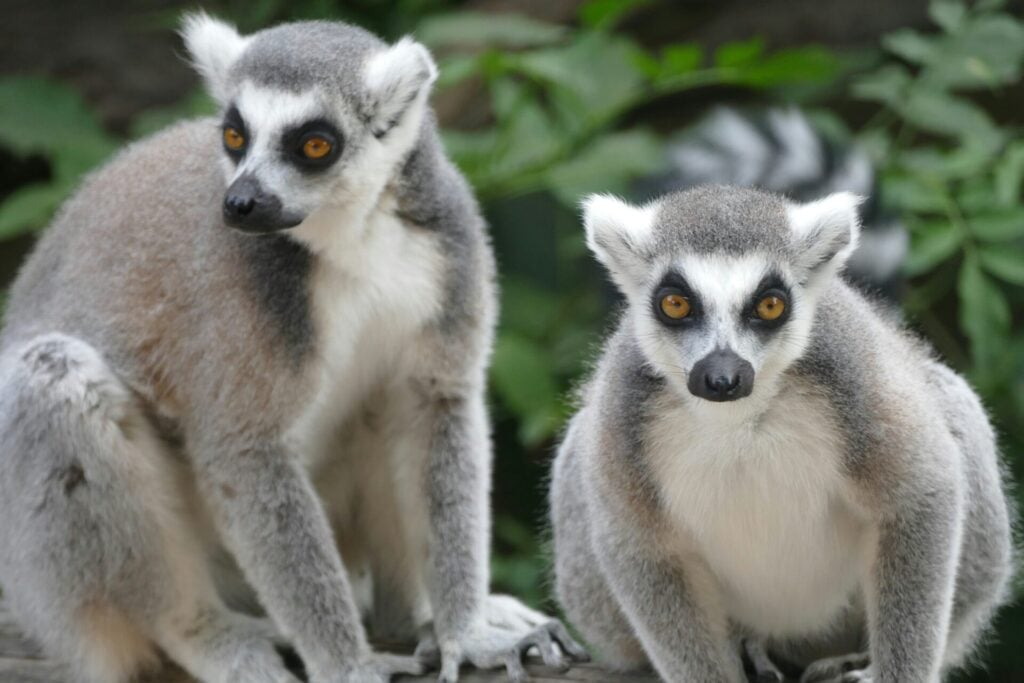
Known as the ‘Spirits of the Night,’ these acrobatic, saucer-eyed primates are endemic to Madagascar, where they’ve called home for 50 million years.
Earth’s most at-risk group of mammals, they could disappear in as little as 50 years, owing to a perfect storm of climate change, charcoal production, logging for illegal hardwoods and slash-and-burn agriculture, which is fragmenting their already fragile habitat. Concerningly, according to the People’s Trust for Endangered Species, less than 15 per cent of the Indian Ocean Island’s original forest remains.
Protected areas like the Anja Community Reserve and Ranomafana National Park offer a safe(r) haven for Madagascar’s 100-plus species of lemur, which include the “singing” silky sifaka and Madame Berthe’s mouse, which weighs in at just 30 grams.
How to Help: Embrace citizen science and volunteer on GVI (Global Vision International)’s Lemur and Wildlife Conservation Expedition in Madagascar that’s dedicated to conserving Lokobe National Park’s Nosy Be Mouse and Hawks’ sportive lemurs.
African Forest Elephants – The Forest Landscape Architects
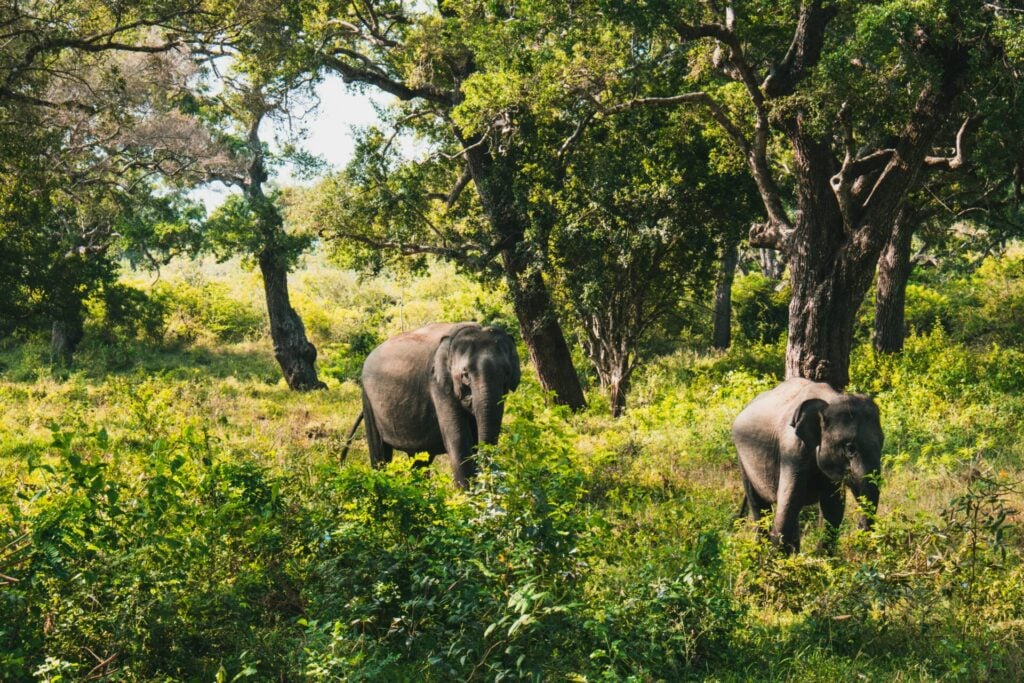
Smaller and more elusive than their savanna cousins, these straight tusked megaherbivores inhabit West and Central Africa’s dense tropical jungle.
Known as ‘Gardeners of the Forests’ thanks to their fertilising dung, these planting powerhouses offer unending services to the ecosystem, from dispersing tree seeds to creating pathways for other animals.
But the triple threat of poaching, Congolese cobalt mining and illicit logging risks fast-tracking these gentle giants of the forest into an early grave. Estimated to be fewer than 100,000 in the wild, their numbers have crashed by 80 per cent in the past three generations, upgrading them to Critically Endangered on the IUCN’s Red List in 2024.
How to Help: Southern Cameroon’s UNESCO World Heritage-protected Dja Biosphere Reserve is a stronghold for the African Forest Elephant. Donating to the Zoological Society of London (ZSL) will help continue their science-led conservation of the species in the reserve.

